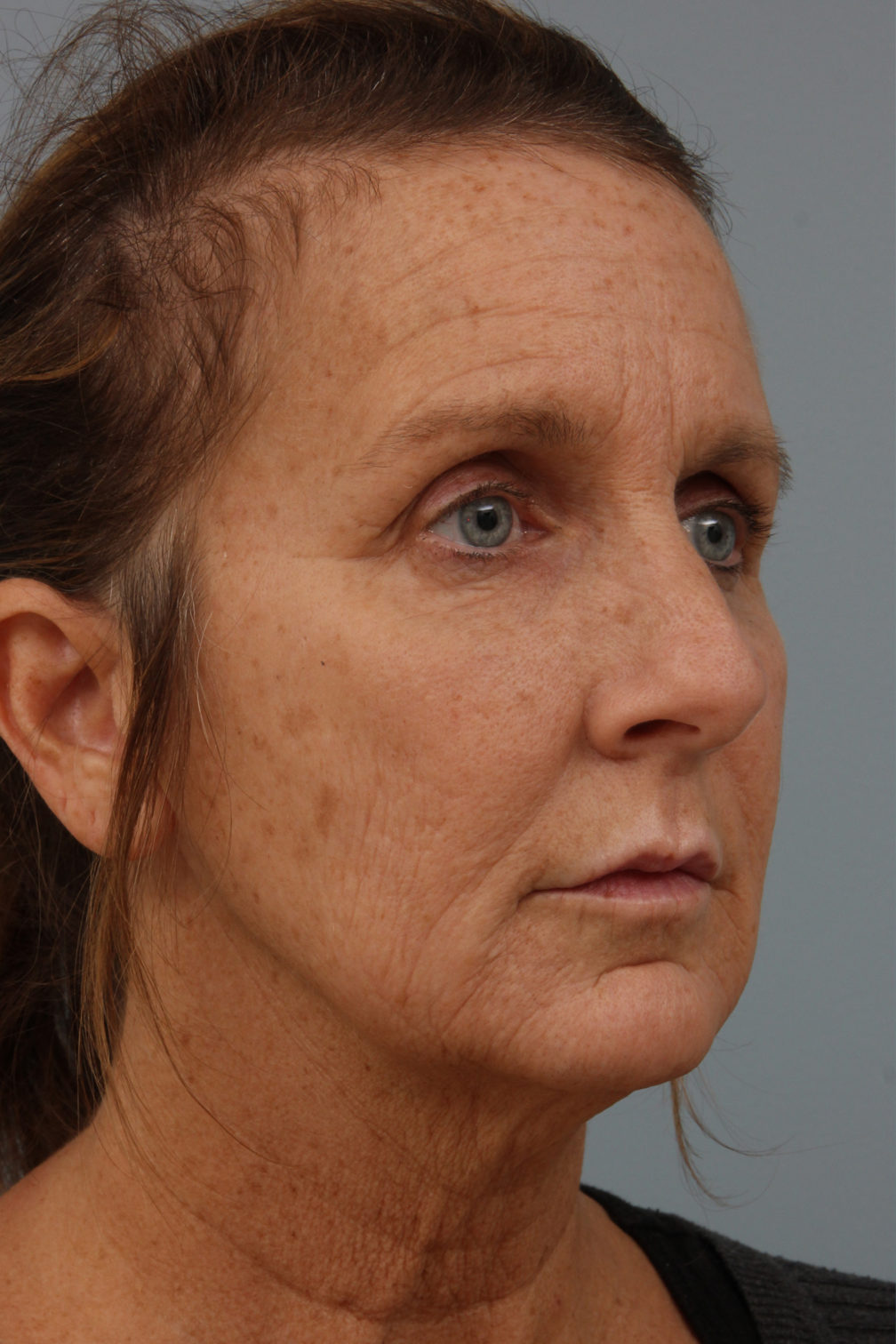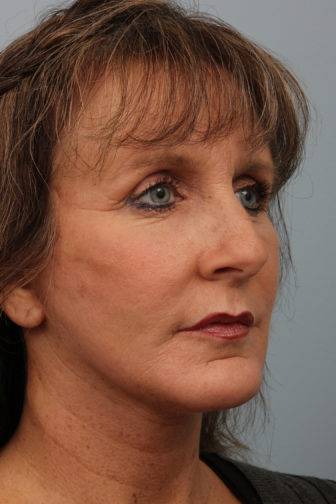In 2019, facelift surgery was the fifth-most common plastic surgery procedure.
At The Williams Surgery, patients who want to reduce the signs of aging in their face often contact us with questions about the facelift procedure.
More often than not, the decision is then made to schedule a consultation with our facial plastic surgery specialist, Dr. Edwin Williams
Typically, patients considering having a facelift done are concerned with their jowls, excess neck tissue, and sagging of the midface soft tissue.
Many of our facelift patients spend approximately two to three years thinking about getting a facelift before they decide to schedule a consultation.
It is certainly a big decision for our patients — but they are usually surprised that the surgery and recovery are much easier than they anticipated.
Here are some of the most common questions patients ask about having facelift surgery.
How Do I Know When I Need a Facelift?
Patients often will ask us, “Do I need a facelift?”
Unfortunately, there is no simple answer to this question.
The real question is, how much are you bothered by the signs of aging on your face, and do you want to take steps to remedy them?
Through the plastic surgery consultation process, our specialized facial plastic surgeons will determine whether a person is a good candidate for surgery.
Using our CGI software, patients can see their expected results. The software utilized helps patients understand the possibilities and limitations of facelift surgery.
Patients know they are ready for a facelift after they have researched their options, found a facial plastic surgeon they feel comfortable with, and have the desire to restore a more youthful appearance to their face and neck.
How Often Do You Perform Facelifts?
The Williams Center performs facelift surgeries every day. Our surgeons are specialists and exclusively practice facial plastic surgery.
It’s important to choose a plastic surgeon who specializes in facial plastic surgery.
Dr. Williams is an international facelift expert who has performed thousands of facelifts. In fact, he performs multiple facelifts each week, and sometimes as many as three in a single day.
What Areas of the Face Are Improved from a Facelift?
The areas that see the most improvement after a facelift are the jowls, excess neck skin, and the midface soft tissues.
With adoption of the deep plane facelift method, we notice that our patients are also seeing improvement of their lower eyelids, without having a done.
A facelift can soften wrinkles and prominent nasolabial folds, but the goal of a facelift is not to eliminate wrinkles — it is to restore a youthful appearance and remove excess skin.
To remove wrinkles, The Williams Center offers adjunctive resurfacing procedures that can be concurrently performed during the facelift procedure.
Will I Have Visible Scars After My Facelift?
During facelift surgery, Dr. Williams creates the incision so that hair can grow through it — meaning that months later, the incision scars are not visible.
The incisions are hidden around the ears and within the hairline, but incisions will be more visible during the first few weeks and months of healing.
When we see our patients one year after they undergo facelift surgery, the incisions are virtually undetectable.
If patients are anxious about scars and have additional concerns after they are fully healed, we can revise this using numbing medication.
Although this is an extremely rare case, we offer this for free to any patients with lingering concerns about their incision scars.
What Is Facelift Recovery Like?
After facelift surgery, patients are typically in very minimal discomfort.
Day 1 & 2 After Facelift Surgery
The day after facelift surgery, patients return to the office to remove the dressing applied in the operating room. The incisions are cleaned, and a gentle, lighter dressing is reapplied.
The next day, patients return for a second time, where their light dressing is removed. Patients can resume normal showering after this time.
One Week After Facelift Surgery
If a patient works from home or behind a computer, they are often able to resume working after approximately three days.
Around six to seven days after facelift surgery, half of the sutures are removed. Two days after that, the remaining sutures are removed.
Two Weeks After Facelift Surgery
The main concern we hear from our patients is that their neck feels “tight”. This happens because the soft tissues get resuspended during facelift surgery, and this resolves itself after about two weeks.
Patients recovering from facelift surgery can expect to have soft tissue swelling within the face. This mostly decreases after two weeks, but it can take up to two months for the swelling to fully disappear.
Bruising is certainly possible, but most patients can camouflage the bruising with makeup. Patients can expect bruising to disappear after about two weeks.
Patients should stay out of the public eye for around 10 to 14 days, but with the current COVID-19 pandemic, if you wear a mask, you can go in public sooner.
One Month After Facelift Surgery
We ask our patients to return to our office about one month after surgery, where we can analyze results and review the before and after photos.
During the consultation and before facelift surgery, we spend time with our patients to ensure they understand recovery instructions, but we are only a phone call away if any additional questions arise.
How Much Does a Facelift Cost?
Our patients can expect to pay approximately anywhere from $13,000 to $40,000 for their facelift surgery.
When Can I See Results of My Facelift?
Patients can see some facelift surgery results as soon as the day after surgery, when we take off the dressing.
In the first few weeks after surgery, patients will see major improvement in the jowls and midface soft tissue.
When the swelling is completely resolved, patients can fully see their final facelift results and compare their before and after pictures.
How Long Will Results of a Facelift Last?
The best way to describe the longevity of the results is comparing it to a conveyor belt.
Unfortunately, we cannot stop the aging process, but we can rewind it to some degree.
For most of our patients, results last around 8 to 12 years, but it is not uncommon for us to see patients 15 years after surgery who continue to look better than their initial “before” photos.
Will People Be Able to Tell That I Had Facial Surgery?
One of our primary objectives at The Williams Center is to deliver excellent, natural facelift results that leave our patients looking and feeling rejuvenated.
Rightfully so, patients are concerned that people will be able to tell that they had a facelift.
During the initial weeks after surgery, there will be bruising and swelling that may make it obvious that a patient has had facial surgery.
However, once that has subsided, an untrained eye will not be able to tell.
As incisions heal, they can be hidden by wearing your hair down. When they are fully healed, they will be undetectable even when patients put their hair up.
At our practice, we deliver natural-looking results, complete with invisible incisions.
Will I Have to Stay Overnight After Facelift Surgery?
Typically, patients can go home the same day they have surgery.
Facelift surgery at The Williams Center is an outpatient surgery performed at the New England Laser & Cosmetic Surgery Center, our accredited ambulatory surgery center located within our building.
On average, facelift surgery takes three and a half hours.
Our patients typically spend one to two hours in our recovery room with one-to-one nursing, and then a friend or family member can drive them home.
We have been operating at the New England Laser & Cosmetic Surgery Center for over 20 years. Our patients benefit from an outpatient surgery center with a surgical staff that specializes in plastic surgery.
What Are Potentials Complications & Risks of Facelift Surgery?
When considering plastic surgery, it’s important to research the risks. Complications are extremely rare when an experienced, board-certified facial plastic surgeon performs a facelift.
Some discomfort is expected after surgery, but this resolves itself during the first two weeks.
Temporary numbness around the incisions is normal and can take up to a year to disappear.
On rare occasions, patients develop bleeding underneath the skin. If this happens, we can address it in the operating room. Although this is rare, when it does happen, it does not affect the long-term results of facelift surgery.
There are also other complications associated with facelifts, including injuring one of the nerves that moves the muscles of the face.
Contact Us
If you have further questions about facelift surgery or would like to schedule a consultation with Dr. Williams, please call us today.


